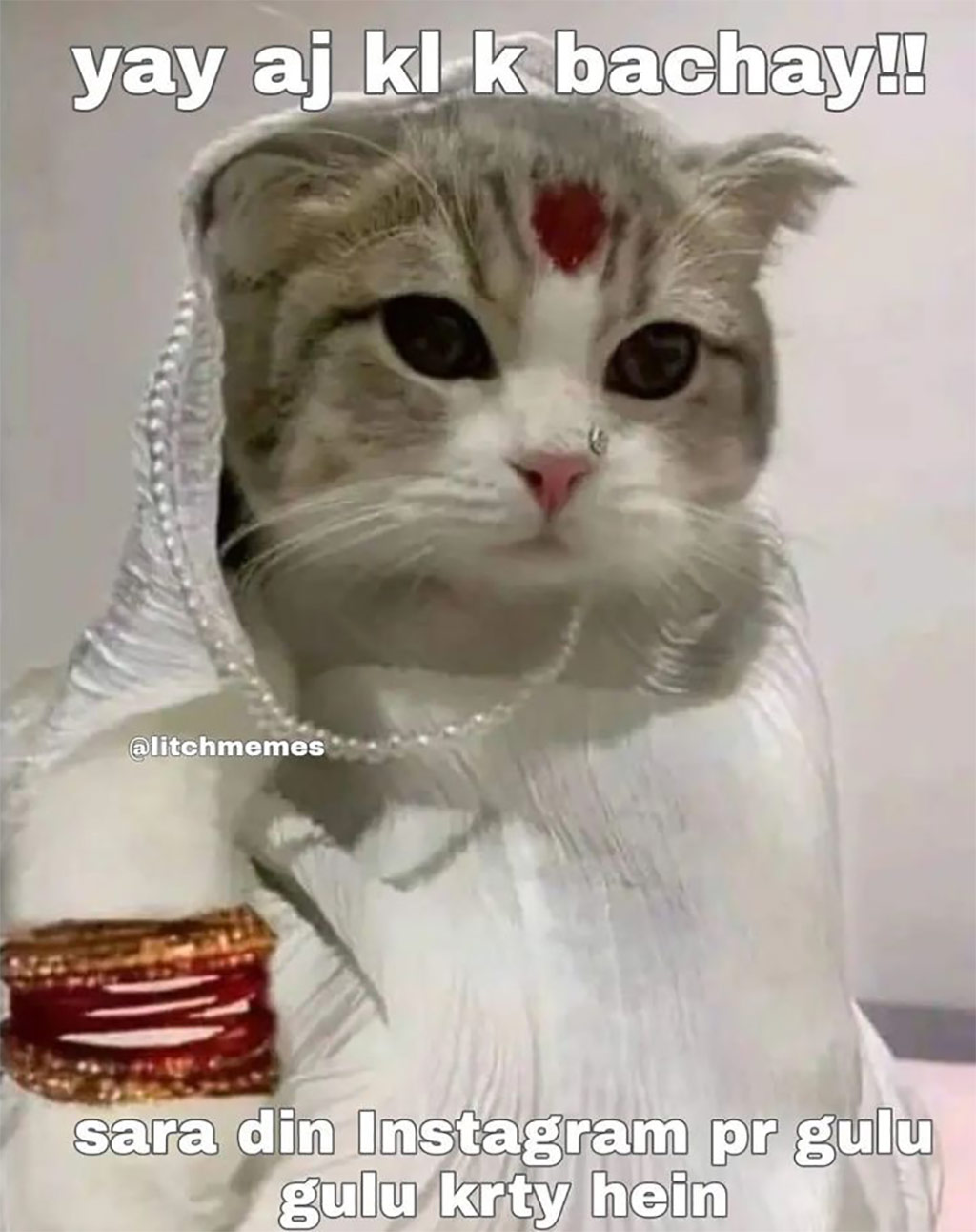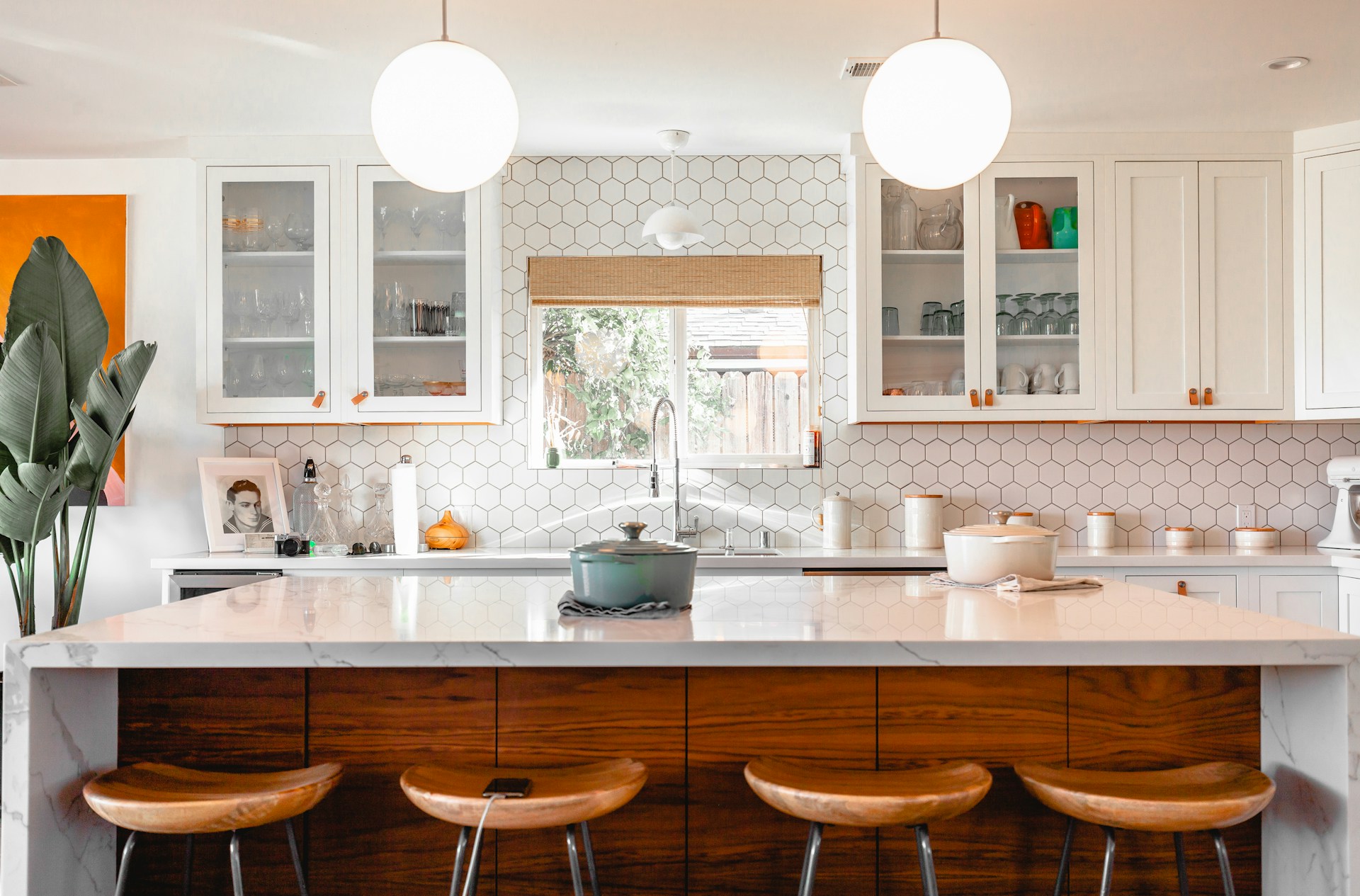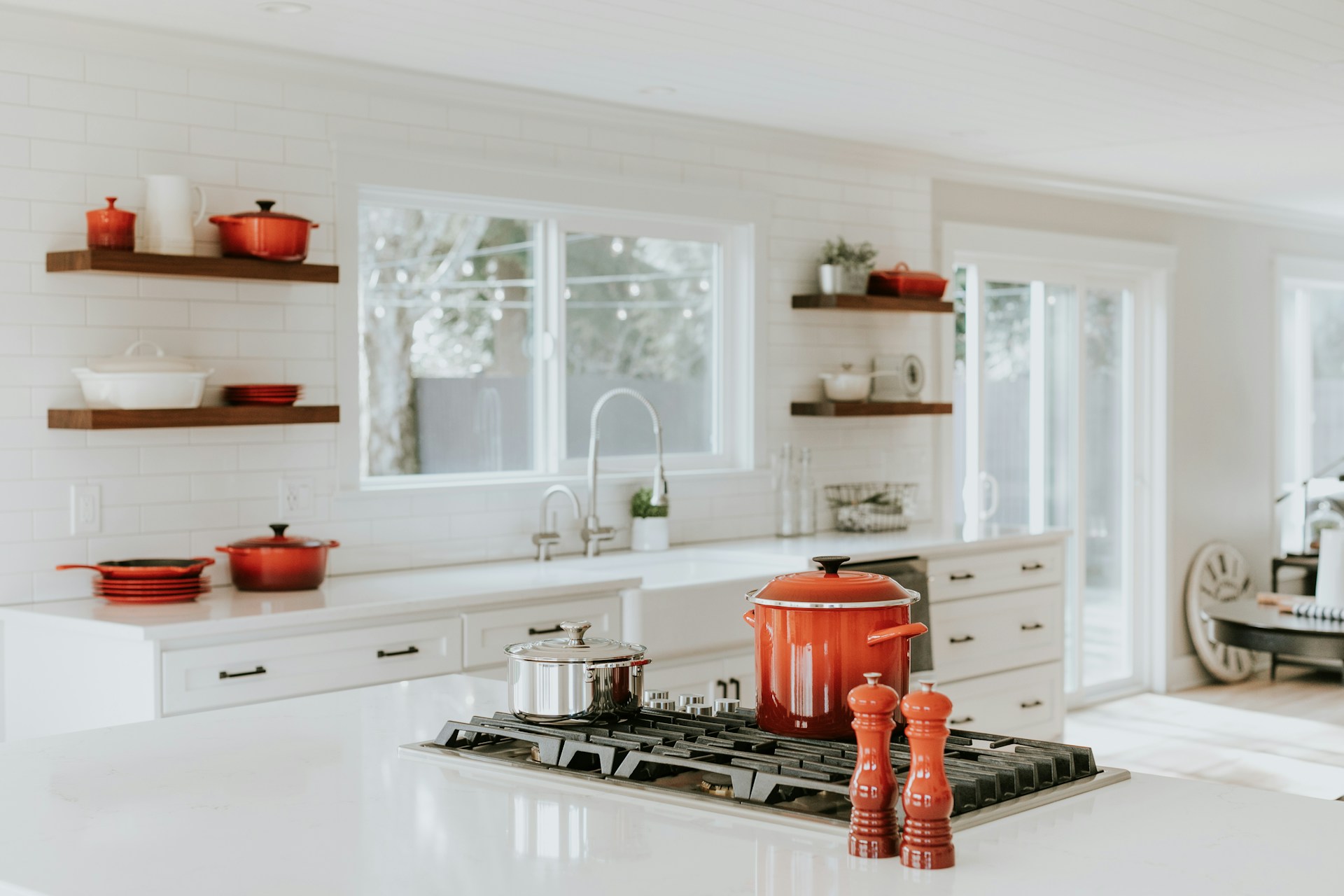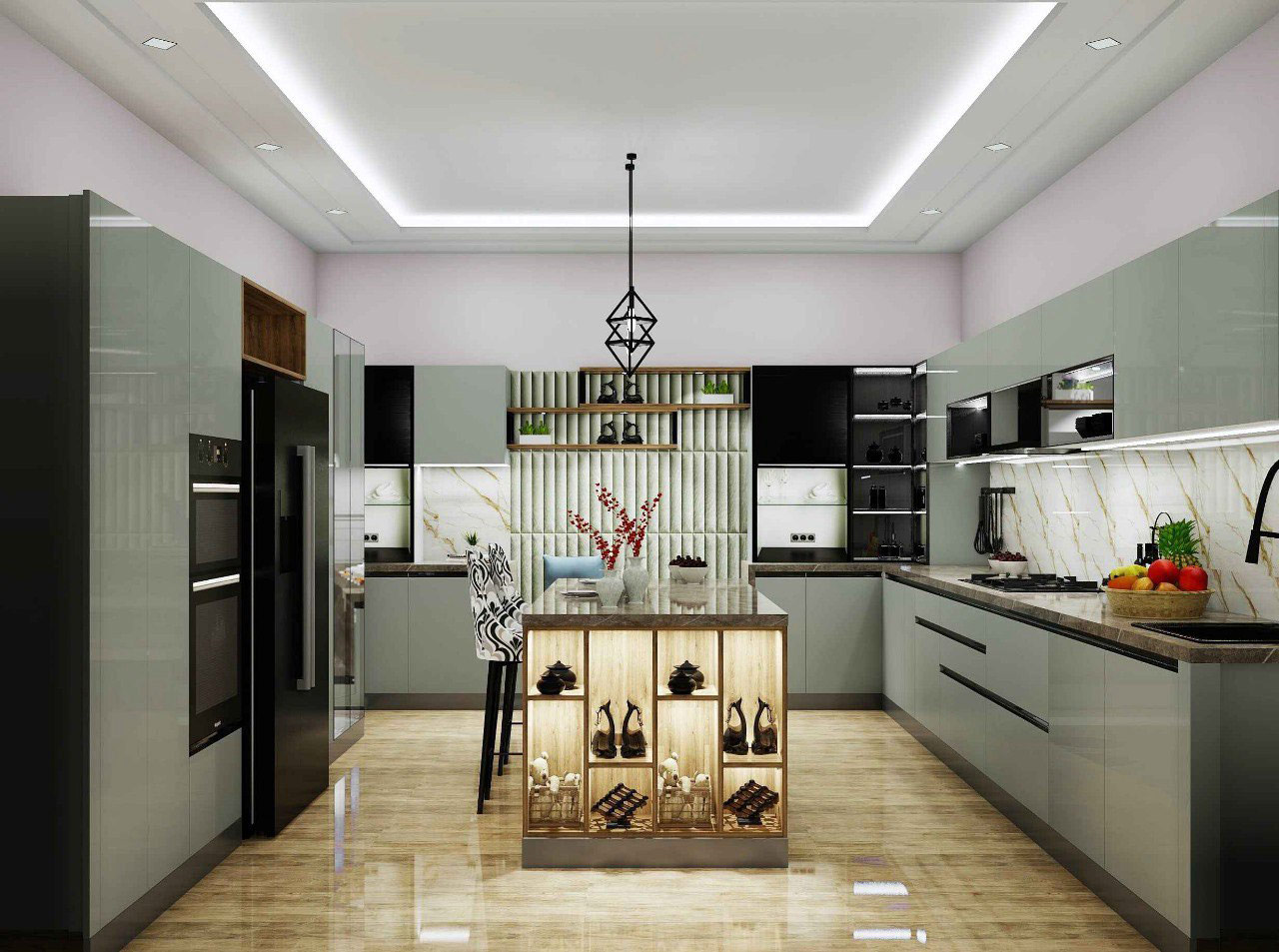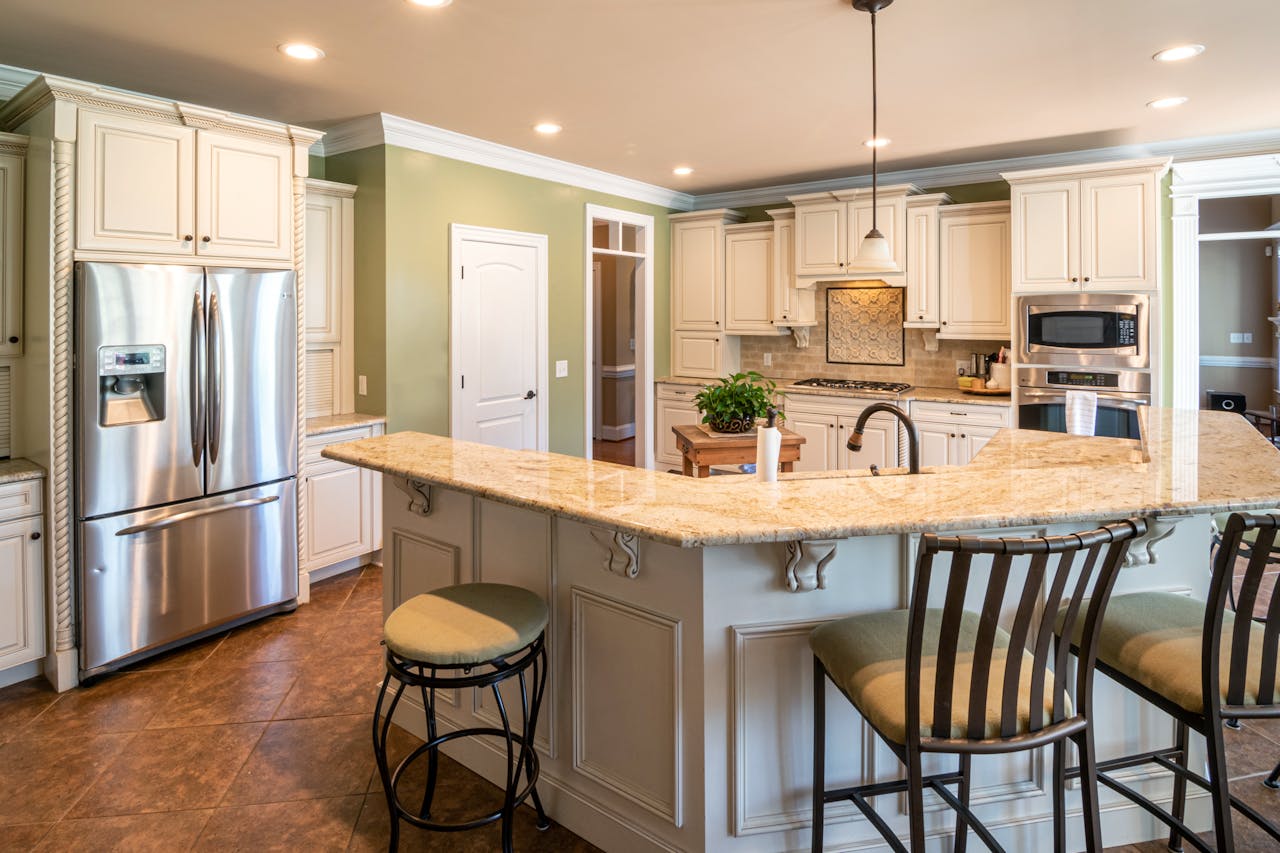Introduction
In the rich tapestry of Indian classical music, Dhrupad holds a unique and revered position. Rooted in the deep philosophical and spiritual traditions of ancient India, Dhrupad is not just a musical form but a synthesis of music and philosophical narratives. Dhriti, which means steadfastness or patience, is intricately woven into the ethos of Dhrupad, making the music a profound expression of both artistic and spiritual discipline. This article explores the ancient synthesis of Dhrupad and Dhriti, delving into historical events, famous stories, and shlokas from the Vedas and Puranas that illustrate their significance.
The Origins of Dhrupad

Dhrupad is one of the oldest forms of Indian classical music, tracing its roots back to the Samaveda, one of the four Vedas which are the oldest scriptures of Hinduism. The Samaveda is essentially a collection of hymns set to musical notes, and it is from these ancient Vedic chants that the Dhrupad genre evolved.
The term “Dhrupad” is derived from the Sanskrit words “dhruva” meaning “fixed” or “steadfast” and “pada” meaning “word” or “verse”, reflecting the music’s stable and profound nature. Dhrupad is characterized by its solemn, spiritual, and heroic qualities, embedding moral wisdom and devotion in its song-music combination.
Dhrupad is considered the oldest known style of major vocal forms associated with Hindustani classical music. It has been discussed in ancient Hindu texts like the Natyashastra (~200 BCE–200 CE) and the Bhagavata Purana (~800–1000 CE), indicating its deep roots in Indian musical tradition. The genre evolved from the earlier Vedic chanting styles of Samgana, Prabandha, and Chhanda.
Dhrupad music flourished under the patronage of Mughal and Rajput courts, with renowned musicians like Tansen and Baiju Bawra gaining fame for their Dhrupad compositions. The genre also found a home in Hindu temples, where the devotional “Haveli Dhrupad” style developed. Thus, Dhrupad has maintained its spiritual and classical essence over centuries, remaining one of the most revered forms of Indian art music.
Dhrupad Historical Context
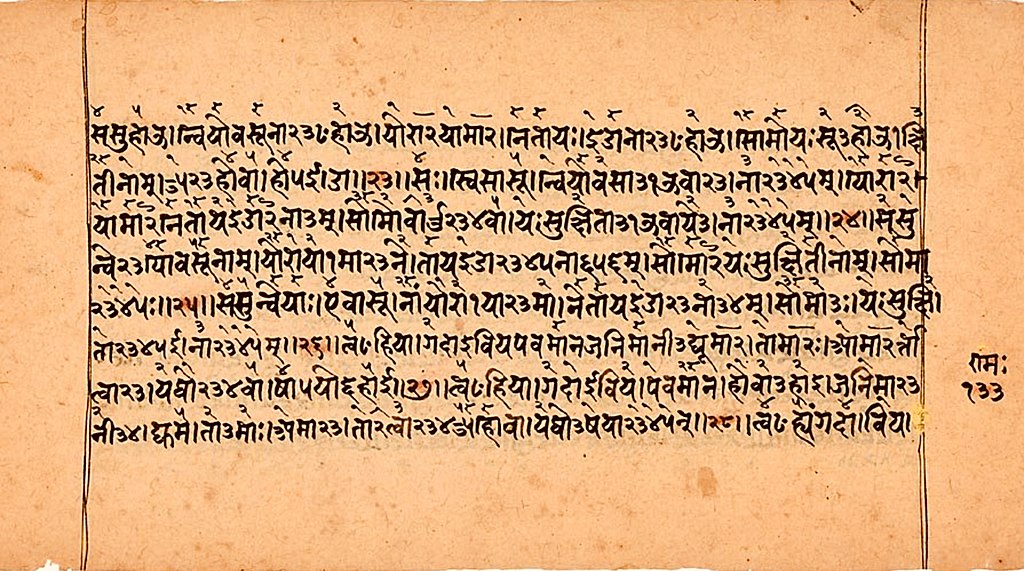
The origins of Dhrupad can be traced back to the chanting of Vedic hymns and mantras, particularly those found in the Sama Veda, which dates back to at least 1500-500 BCE. These hymns were sung by priests during Vedic rituals with great precision and devotional intensity, establishing a connection between the human and spiritual realms. The Sama Veda was chanted using a specific melody and rhythm called Samgana, which gradually evolved into other vocal styles like Prabandha and Chhanda with the introduction of verse and meter. The fusion of these elements led to the emergence of Dhrupad, which became a sophisticated classical form of music by the 1500s.
The Bhakti movement, particularly that of the Vallabh Sampradaya, had a significant influence on the development of Dhrupad, making it more devotional in nature. Dhrupad was rendered in temples facing the divine, full of devotion and emotion, giving rise to what became known as Haveli Dhrupad/Sangeet. Famous proponents of this style include the Ashta chaap (eight primary poets of the Vallabh Sampradaya), Swami Haridas (Nimbarka Sampradaya), and Gurbani (Sikh Tradition).
By the 1500s, Dhrupad came to be patronized by the royal courts, with Raja Man Singh of Gwalior giving it immense encouragement and introducing many refinements. This style came to be known as Darbari Dhrupad. Famous proponents of this form include Tanna Mishra (Miyan Tansen) and Baiju Bawra, both of whom are said to have received guidance from Swami Haridas.
Dhrupad and Dhriti: The Philosophical Connection
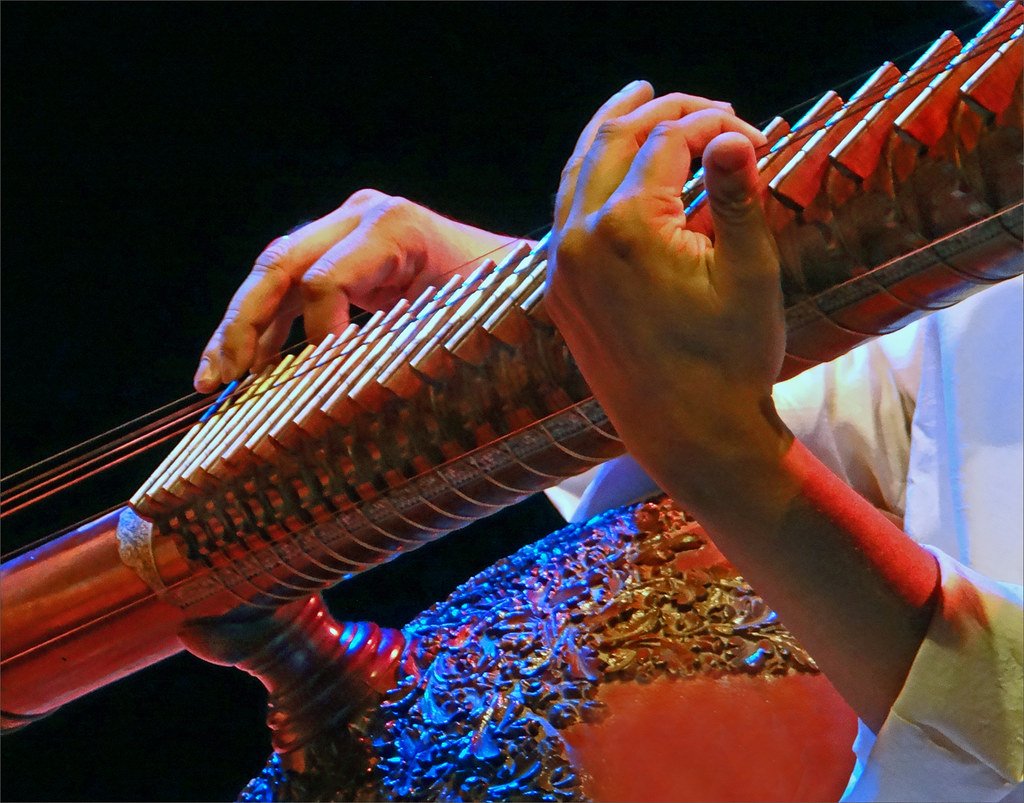
Dhriti, meaning ‘steadfastness’ or ‘patience’, is a highly regarded virtue in Hindu philosophy and scriptures. In the context of the classical Indian musical form of Dhrupad, Dhriti signifies the disciplined and meditative approach required to master this ancient tradition. Dhrupad is not merely a performance art, but a spiritual practice that demands a high level of dedication, patience and internalization from the practitioner.
The concept of Dhriti is deeply rooted in Hindu thought, where it is described as the subtle faculty that enables an individual to strive continuously towards a goal, providing the courage, enthusiasm, and perseverance to overcome all obstacles. In the Bhagavad Gita, Dhriti is identified as one of the three types of determination, with Sattvic Dhriti representing the unwavering fortitude with which one works.
In the context of Dhrupad, Dhriti reflects the meditative and introspective nature of this musical form. Dhrupad requires the performer to internalize the rhythmic and melodic structures, developing a deep understanding and connection with the music. This process of internalization and disciplined practice is akin to the cultivation of Dhriti, where the practitioner must maintain steadfastness, patience, and focus to master the complexities of Dhrupad.
The Dhrupad tradition emphasizes the importance of Dhriti in the pursuit of musical and spiritual excellence. The Dhrupad performer must possess a strong sense of determination, unwavering focus, and the ability to overcome challenges and distractions, all of which are embodied in the concept of Dhriti. This disciplined and meditative approach to Dhrupad is not merely a performance technique, but a reflection of the deeper spiritual and philosophical underpinnings of this ancient musical form.
Dhriti, as a virtue of steadfastness and patience, is deeply intertwined with the Dhrupad tradition, where it represents the disciplined and meditative approach required to master this ancient and revered musical form.
Shlokas and Hymns Illustrating Dhriti
The Bhagavad Gita, one of the most important philosophical texts in Hinduism, emphasizes the importance of Dhriti. In Chapter 18, Verse 33, it is stated:
“Dhrityā yayā dhārayate manaḥ-prāṇendriya-kriyāḥ Yogenāvyabhicāriṇyā dhṛtiḥ sā pārtha sāttvikī.”
Translation: That steadfastness by which one controls the mind, the life-airs, and the senses, maintaining unwavering concentration through yoga, O Arjuna, is of the nature of goodness.
The verse highlights Dhriti as the foundation for spiritual practice, which involves maintaining unwavering focus and discipline in controlling the mind, life-force, and senses through the practice of yoga. This concept of Dhriti is equally relevant to the practice of Dhrupad, where the musician’s steadfast focus and disciplined practice are akin to the yogic control of mind and senses.
Lord Krishna further elaborates on the three types of Dhriti in the Bhagavad Gita:
- Sattvik Dhriti: The steadfastness born out of positivity that upholds the mind, sustains the Prana (life-force), and all the activities of the senses.
- Rajasik Dhriti: The steadfastness in which one’s state of mind, enthusiasm, behavior, and actions are related to some little reward.
- Tamasik Dhriti: The steadfastness by which an evil-minded person does not give up sleep, fear, anxiety, sorrow, and vanity.
In Chapter 16, Verse 1-3, Lord Krishna describes the divine qualities that should be cultivated as part of spiritual practice, including:
“Vigor, forgiveness, fortitude, purity, absence of hatred, absence of pride—these belong to one born for a divine state, O Arjuna.”
These divine qualities, such as vigor, forgiveness, fortitude, and purity, are essential for the aspirant on the spiritual path. They help overcome the downward pull of Tamas (inertia) and maintain steadfastness in the face of adversity.
The Bhagavad Gita emphasizes that the practice of Dhriti, or steadfastness, is crucial for both spiritual and personal growth. It enables one to control the mind, senses, and life-force, leading to a state of unwavering focus and discipline. This concept is not only relevant to the spiritual seeker but also to the practitioner of Dhrupad, where the musician’s steadfast focus and disciplined practice are essential for mastering the art form.
Stories and Incidents from the Puranas
The Puranas, ancient Hindu texts that narrate the history of the universe, contain numerous stories that exemplify the virtues of Dhriti and their connection to music and devotion. One such story is that of Narada Muni, a divine sage and a master of music.
Narada is often depicted with a veena, a stringed musical instrument, wandering through the cosmos singing the praises of the Lord. His unwavering devotion and musical prowess are legendary. According to the Vishnu Purana, Narada’s music had the power to enchant even the gods, and his steadfast devotion (Dhriti) was the driving force behind his musical genius.
Evolution of Dhrupad Through Historical Events

Dhrupad, the oldest surviving form of Hindustani classical music, has undergone significant transformations over the centuries, influenced by various historical events and cultural shifts.
During the Gupta period (4th to 6th centuries CE), often regarded as a golden age for arts and culture in India, Dhrupad flourished. The Gupta kings were great patrons of music, and their courts were filled with musicians and scholars who contributed to the development of Dhrupad.
The roots of Dhrupad can be traced back to the chanting of Vedic hymns and mantras, which were part of the Gandharva Veda, the Vedic science of music, a branch of the Sama Veda. The Sama Veda was chanted with the help of melody and rhythm, called Samgana. Gradually, this developed into other vocal styles called ‘Chhanda’ and ‘Prabandha’ with the introduction of verse and meter. The fusion of these two elements led to the emergence of Dhrupad.
The birth of Dhrupad as we know it today coincided with the Bhakti movement (particularly that of the Vallabh Sampradaya) and consequently was more devotional in nature. It was rendered in temples facing Divinity, full of devotion and bhaav, this was the genesis of what became known as Haveli Dhrupad/Sangeet.
In the 1500s, Dhrupad came to be patronized by the royal courts, and Raja Man Singh (King of Gwalior) in particular gave Dhrupad immense encouragement and introduced many refinements, being a musician himself. This style came to be known as the Darbari Dhrupad.
The pristine nature of Dhrupad has survived to this day, and both majestic forms can be heard just as they were more than 500 years ago, the Haveli form in Temples and the Darbari form in concerts.
The teaching of Dhrupad is very closely tied to the ancient system of guru-shishya parampara (the teacher-disciple tradition), which is an oral tradition that dates back thousands of years.
The Role of Tansen
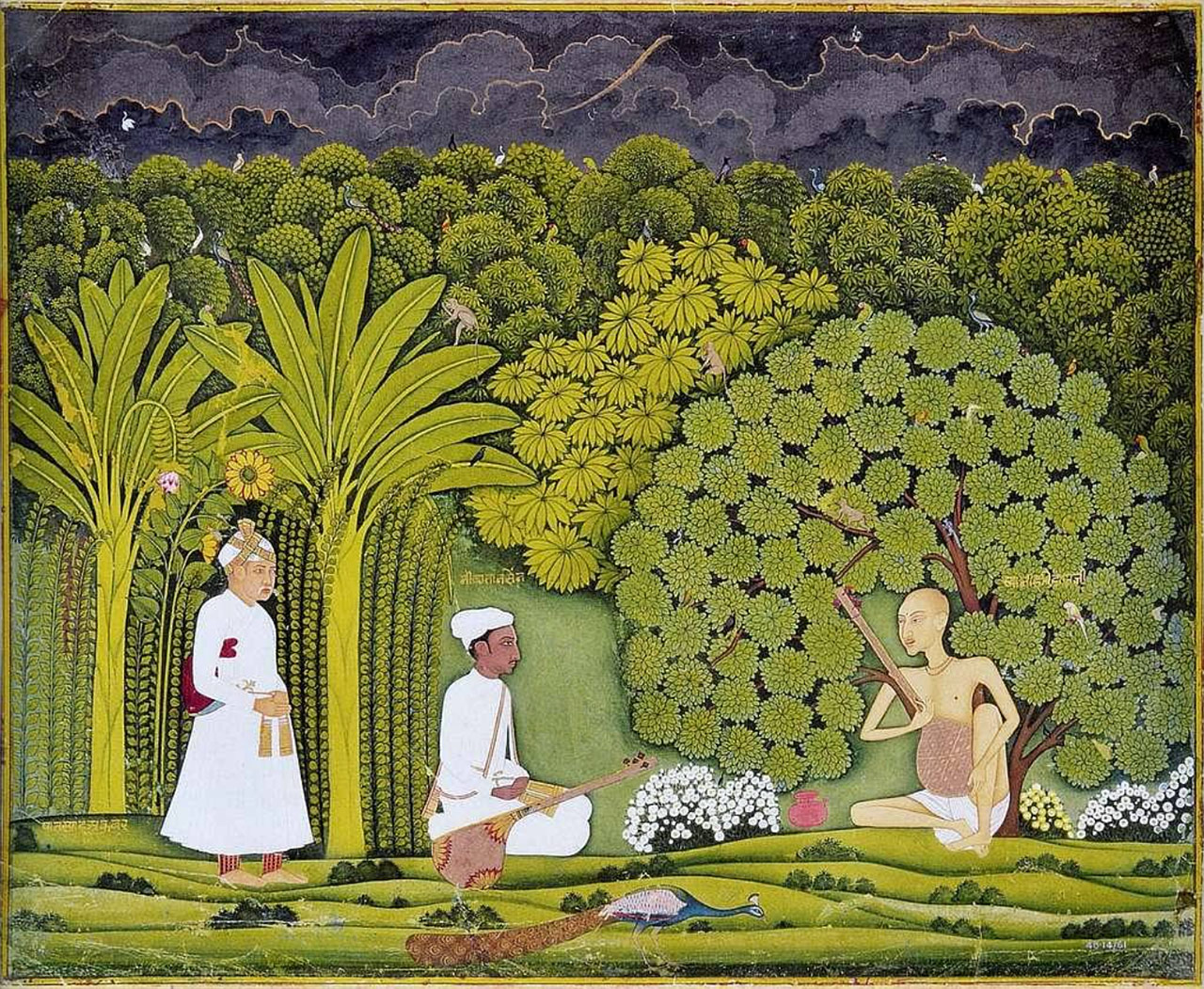
Tansen, a legendary musician in the court of Emperor Akbar, is widely regarded as one of the most influential figures in the history of Dhrupad. He is credited with elevating this ancient form of Indian classical music to new heights of popularity and sophistication.
Tansen’s compositions, known as “Tansen’s Dhrupads,” are still revered and performed by musicians today. His mastery of Dhrupad was not just technical but also deeply spiritual. According to legend, his rendition of Raga Deepak was so powerful that it could light oil lamps. This story illustrates the profound connection between music and the natural elements, a theme that runs throughout the history of Dhrupad.
Tansen is also known for his inventions of several ragas, including the night raga Darbari Kanhra, the morning raga Mian Ki Todi, the mid-day raga Mian ki Sarang, and the seasonal raga Mian ki Malhar. These ragas, named after him, are still widely performed and studied by musicians.
In addition to his musical contributions, Tansen is also remembered for his spiritual and devotional compositions. He composed several Dhrupads on Hindu gods and goddesses, such as Ganesha, Shiva, Parvati, and Rama. These compositions reflect the deep connection between music and spirituality in the Dhrupad tradition.
One of the most famous legends associated with Tansen is his encounter with the Sufi saint Miyan Tansen. According to the legend, Tansen was born mute and deaf, but the saint cured him and asked Swami Haridas to take him under his tutelage. This story highlights the interconnectedness of different spiritual traditions in the development of Dhrupad.
Tansen’s legacy continues to inspire and influence musicians and music lovers alike. His compositions and inventions have left an indelible mark on the history of Dhrupad, and his name remains synonymous with the highest levels of musical excellence and spiritual depth.
The Gharanas of Dhrupad
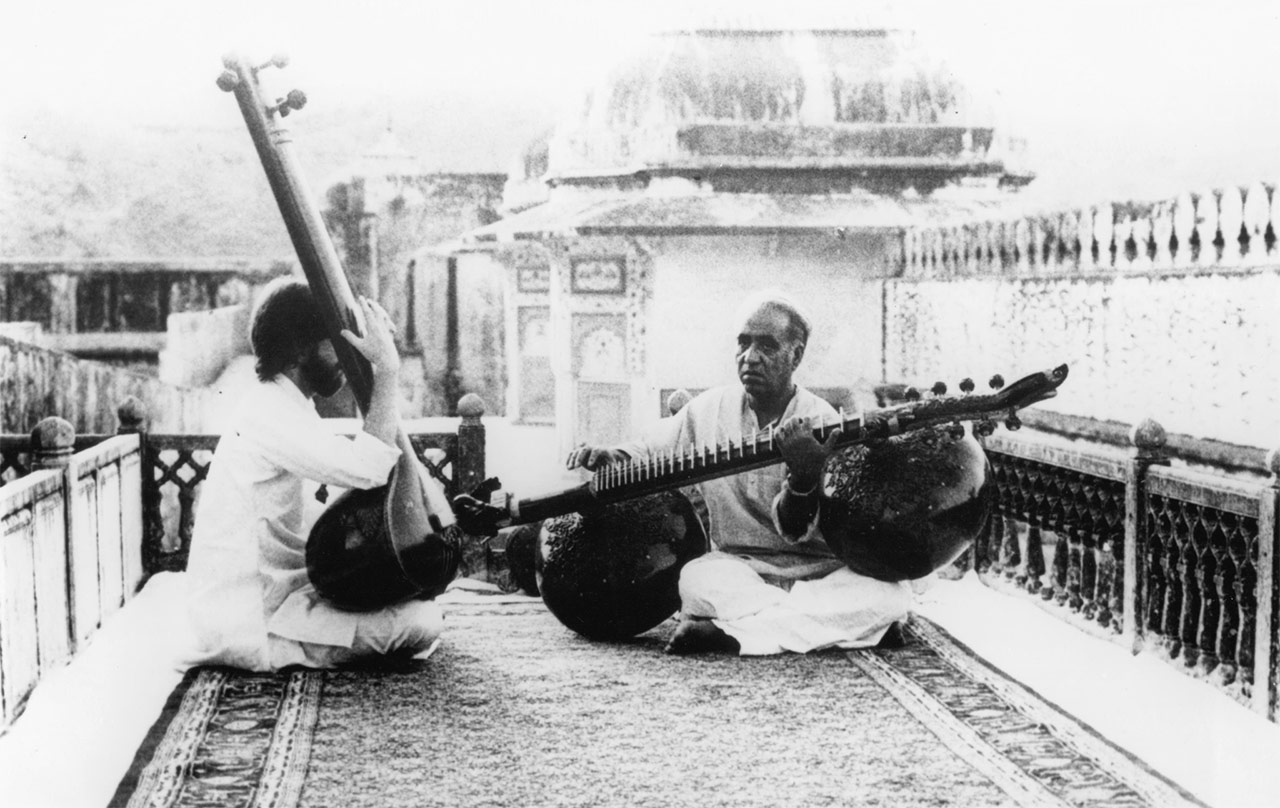
The evolution of Dhrupad also saw the emergence of various “gharanas” or schools of music, each with its own unique style and repertoire. Some of the most prominent Dhrupad gharanas include:
- Dagar Gharana: Known for its emphasis on slow tempo and deep introspection, the Dagar Gharana is one of the most influential schools of Dhrupad.
- Darbhanga Gharana: This gharana is characterized by its energetic and vibrant style, often incorporating rhythmic patterns and improvisations.
- Bettiah Gharana: The Bettiah Gharana is known for its distinct compositions and focus on lyrical content.
Each of these gharanas contributed to the rich diversity of Dhrupad, preserving the ancient traditions while also adapting to changing times.
Dhrupad in Contemporary Times
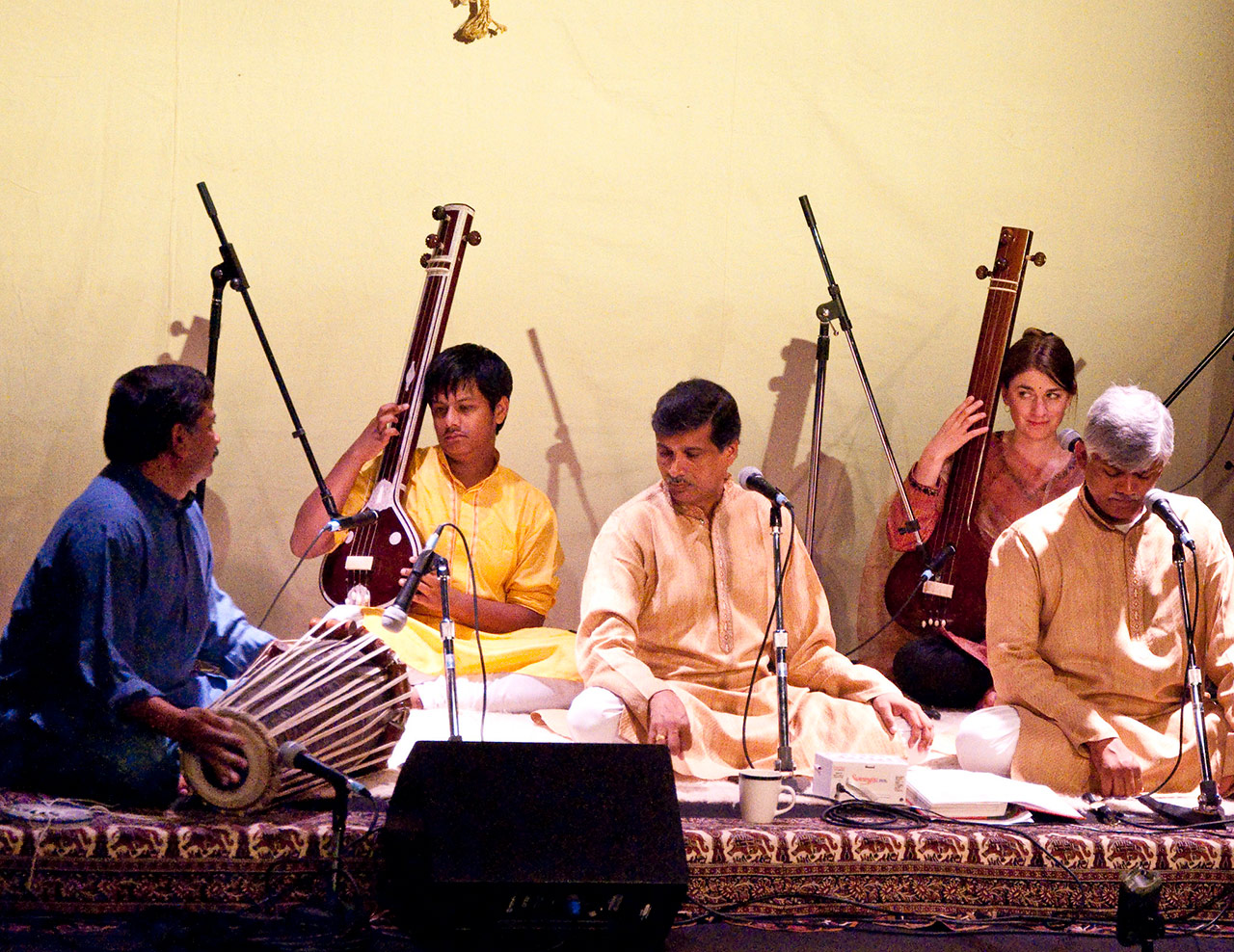
Dhrupad, the oldest form of Hindustani classical music, has endured the test of time and continues to thrive in the modern era thanks to the tireless efforts of dedicated musicians and scholars.
The Dhrupad tradition has been preserved and propagated through rigorous training and performance by renowned maestros. The Dagar family, a lineage of Dhrupad vocalists, and the Gundecha brothers have played a pivotal role in ensuring the survival and evolution of this ancient art form.
The Dagar family, known for the Dagarvani style of Dhrupad, has been instrumental in keeping the tradition alive for over 20 generations. Their mastery of the alap, the meditative and improvisational opening section of a Dhrupad recital, has captivated audiences worldwide.
Similarly, the Gundecha brothers, Ramakant and Akhilesh Gundecha, have been at the forefront of Dhrupad’s revival. They founded the Dhrupad Sansthan in Gwalior, which has been recognized by UNESCO as a cultural heritage institution, and have trained numerous students in the art of Dhrupad.
The roots of Dhrupad can be traced back to the chanting of Vedic hymns and the Sama Veda, the ancient Hindu scripture that emphasizes the importance of music in spiritual practice. This connection to the sacred and the divine has been a defining characteristic of Dhrupad throughout its history.
One of the most revered Dhrupad compositions is the “Yugala Shataka” of Shri Shribhatta, written in the 13th century CE. This work, part of the Nimbarka Sampradaya, contains Dhrupad lyrics that praise the divine love between Krishna and Radha. The spiritual and devotional nature of Dhrupad is further exemplified in the compositions of the 16th-century saint and poet-musician Swami Haridas, who was a renowned Dhrupad singer.
The enduring legacy of Dhrupad is a testament to the resilience and adaptability of this ancient art form. Despite the challenges of changing musical tastes and the decline of royal patronage, Dhrupad has continued to captivate audiences and inspire new generations of musicians. Through the dedication of its practitioners and the support of cultural institutions, Dhrupad remains a vital and living tradition, preserving the rich musical heritage of the Indian subcontinent.
Famous Hymns and Compositions
Dhrupad compositions are typically set to specific ragas and talas, with each composition having a spiritual or philosophical theme. Some of the most famous hymns and compositions in the Dhrupad repertoire include:
- Mangalacharan: An invocation hymn, often performed at the beginning of a Dhrupad concert, seeking blessings from the divine.
- Alap: A slow, improvisational section that explores the raga, setting the mood for the composition that follows.
- Bandish: The main composition, featuring poetic lyrics set to a specific tala (rhythmic cycle).
The Spiritual Journey of a Dhrupad Musician
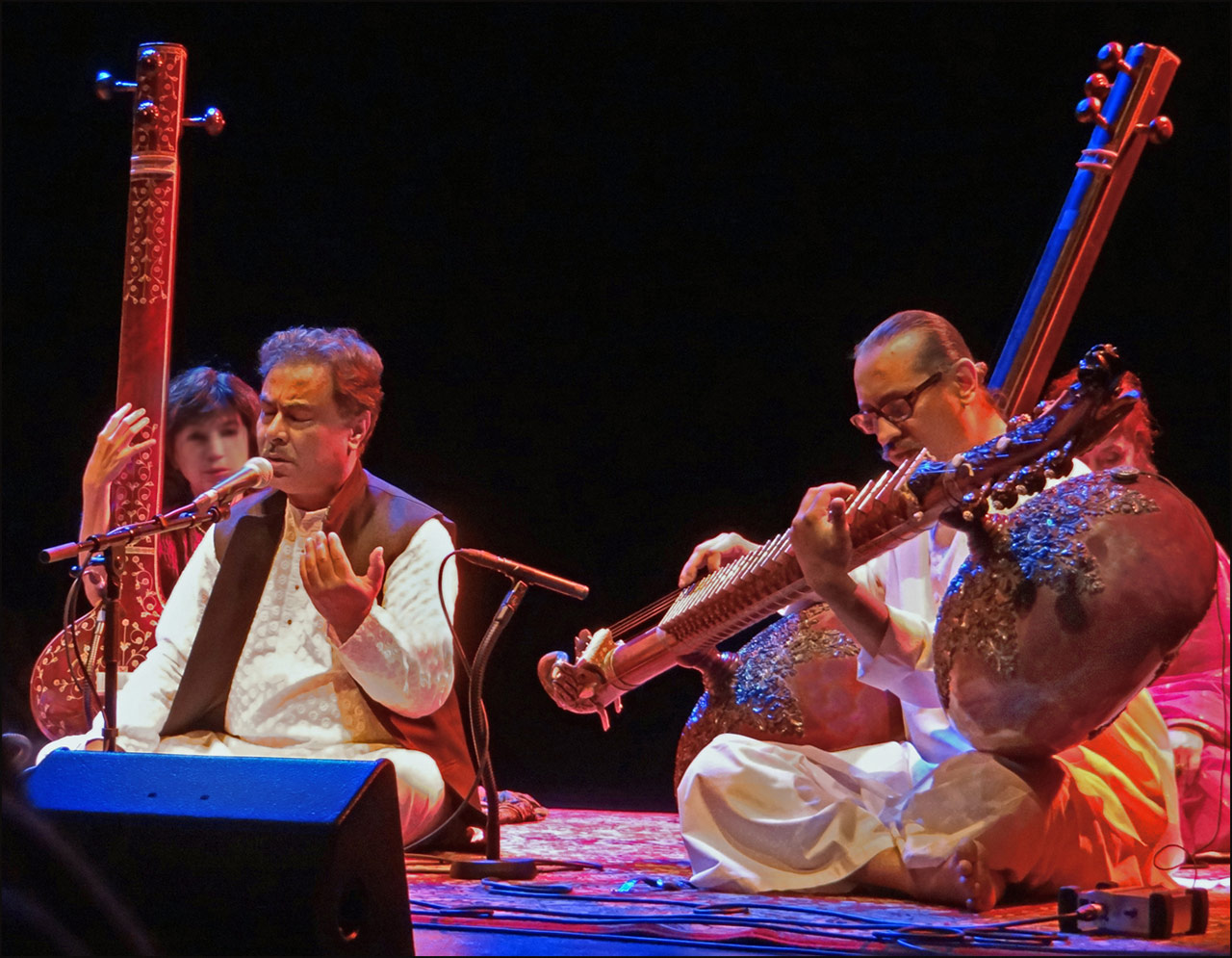
The journey of a Dhrupad musician is one of lifelong learning and devotion, rooted in the ancient guru-shishya parampara (teacher-disciple tradition). This traditional method of learning involves years of rigorous practice under the guidance of a master, with the guru imparting not just musical knowledge but also the spiritual and philosophical underpinnings of the art form.
The training process is an oral tradition that dates back thousands of years, where the students live in the home of their guru and devote themselves to the practice of music. The lives of students are focused on learning music and helping with the household chores of their teacher.
The importance of the traditional guru-shishya relationship to travel the path of music, with love and devotion, is emphasized in this tradition. The guru not only teaches the technical aspects of music but also imparts the spiritual and philosophical aspects, which are an integral part of the Dhrupad tradition.
One of the key aspects of Dhrupad is its spiritual and meditative nature. It is considered a form of “Shabda Brahma,” which can lead devotees to the ultimate bliss of liberation. This is reflected in the choice of verses used in Dhrupad compositions, which are often drawn from ancient Hindu scriptures and are meant to invoke spiritual energy.
The Dhrupad tradition is also closely linked to the concept of “Naad Yoga,” which is the study of sound and its effects on the body and mind. It is believed that the practice of Dhrupad can awaken the hidden power within us and lead to the development of human consciousness.
The journey of a Dhrupad musician is also one of self-discovery and transformation. As the musician delves deeper into the art form, they are expected to undergo a process of purification and refinement, both in terms of their musical skills and their personal character.
This idea is beautifully expressed in the following shloka from the Narada Bhakti Sutra:
“Sravanaṃ kīrtanaṃ viṣṇoḥ smaraṇaṃ pāda-sevanam |
Arcanaṃ vandanaṃ dāsyaṃ sakhyam ātma-nivedanam ||“
Meaning: Hearing about the glories of Lord Vishnu, chanting His names, remembering Him, serving His lotus feet, worshiping Him, offering prayers, becoming His servant, making friends with Him, and surrendering one’s whole being to Him.
This shloka emphasizes the importance of devotion and surrender in the spiritual journey, which is also a key aspect of the Dhrupad tradition.
The journey of a Dhrupad musician is one of lifelong learning, devotion, and transformation. It is a tradition that is deeply rooted in the spiritual and philosophical aspects of Indian culture and is a testament to the power of music to uplift the human spirit and lead to the ultimate goal of liberation.
Conclusion
Dhrupad and Dhriti represent a harmonious blend of music and philosophy, embodying the timeless values of steadfastness, devotion, and spiritual discipline. From its ancient roots in the Vedic hymns to its flourishing in the courts of Indian royalty, Dhrupad has remained a profound and enduring expression of India’s rich cultural heritage.
Through historical events, famous stories, and the wisdom of the scriptures, we see how Dhrupad transcends mere musical performance to become a spiritual journey, one that continues to inspire and elevate both musicians and audiences alike. As we celebrate this ancient synthesis, we honor the timeless tradition of Dhrupad and the enduring virtue of Dhriti, both of which continue to resonate in the hearts and minds of people across the world.












